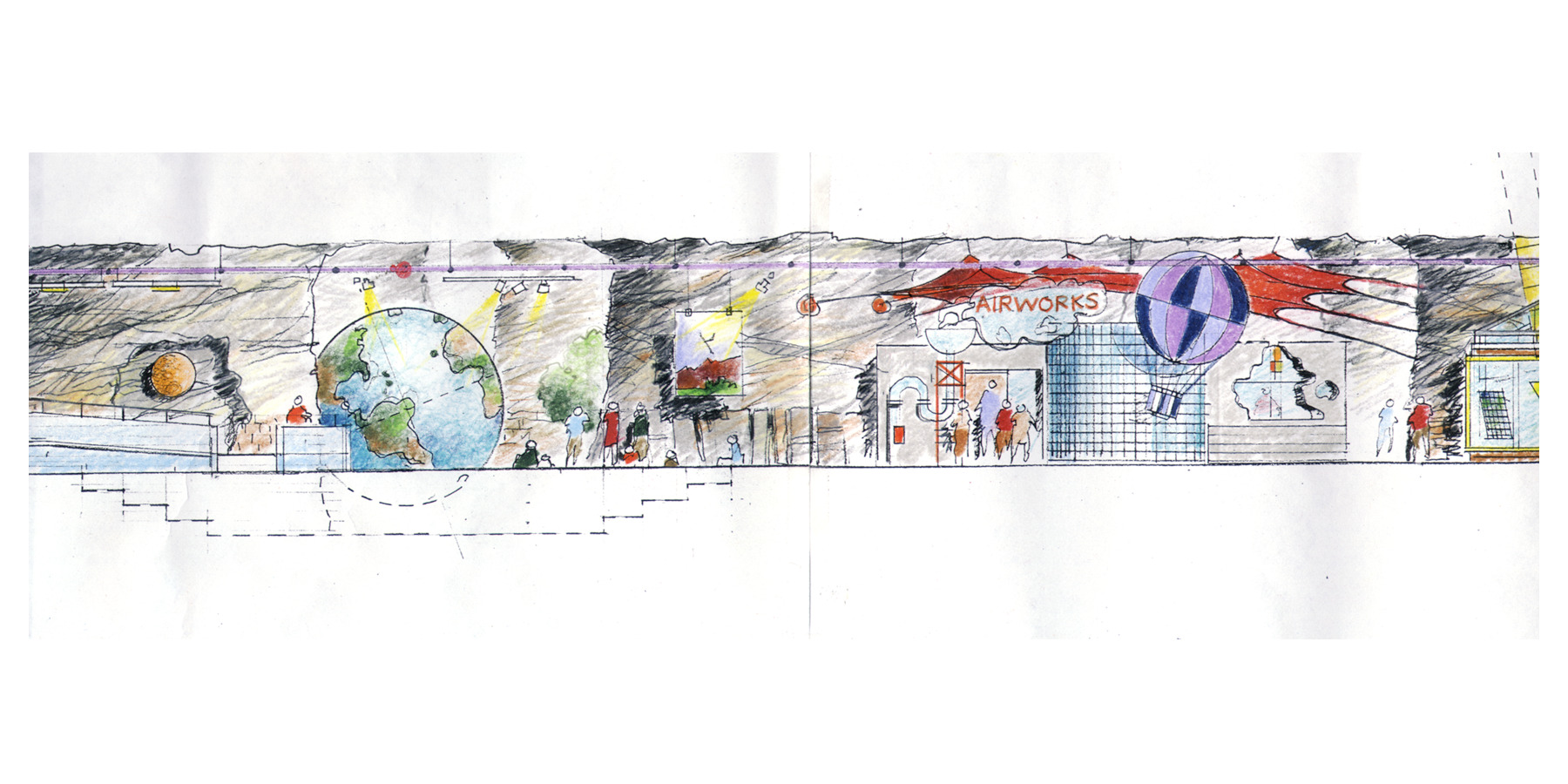Earthworks

Information
BNIM collaborated with Linda Segebrect, Executive Director, and Terry Chase of Chase Studios to create unique learning experiences at Earthworks for visiting groups of fourth grade students. These educational experiences are anchored at the intersection of the two very important ecotones that create Kansas City’s environment, the Ozark woodland and the Tallgrass prairie. BNIM created spaces to host activities related to the five different ecosystems: soil, prairie, pond, cave, and forest. Each ecosystem is connected to the next by a sinuous wooden walkway. Earthworks hosts 10,000 third- and fourth-graders annually.
During their time at Earthworks, students learn about each ecosystem, above grade and below, and the unintentional challenges that human occupancy and behaviors create in our natural world. Students’ visits culminates with groups working as teams to make critical decisions that will either improve conditions of the pond and its ecosystem or lead to a devastating algae bloom. The teamwork, decision-making and environmental lessons learned are important life skills and knowledge for students who will shape our collective future as citizens and leaders.
Impact + Innovation
The organization of Earthworks’ experiences within the former limestone mine is more akin to how a hermit crab occupies an abandoned conch shell. BNIM and our collaborators gently inserted each experience while celebrating the past life and nature of the abandoned mine. The limestone walls, floors and ceilings are a story and lesson of one of the limestone strata that lie below Kansas City and the region.
Architectural, exhibitions and furnishing are designed to create integrated experiences primarily using unadorned natural materials as modestly as possible. This is done to celebrate the woods, fabrics, metals, and other materials as part of the storytelling about responsible environmental choices and living.
While Earthworks served the youth community of Kansas City very successfully, hosting 10,000+ school children each year, changes in the city’s public school funding for field trips created inequities that could not be overcome and led to the program ceasing operations.




